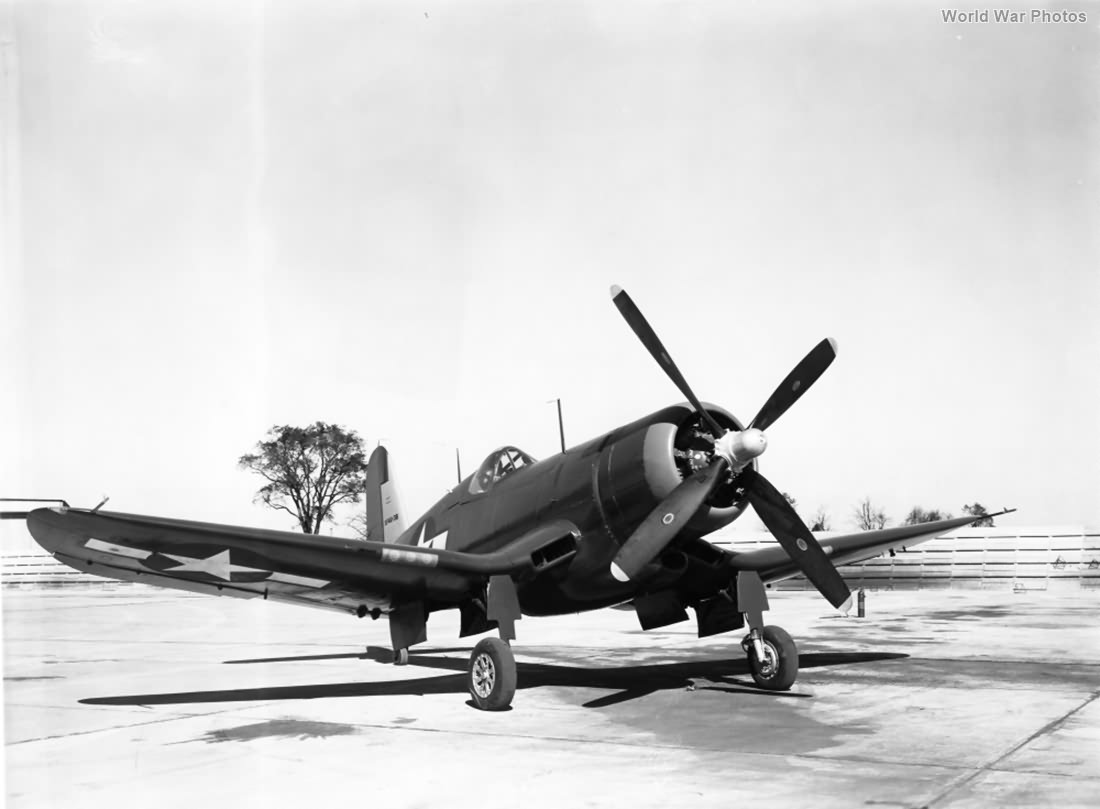In 1941, a new project was initiated to enhance the high-altitude capabilities of the Corsair. On 14 June 1941, the Navy instructed Vought to conduct a design study for installing a turbo-supercharged Double Wasp engine, with the aim of improving the aircraft’s performance at altitudes up to 40,000 ft (12,200 m). The XR-2800-16(C) engine was equipped with a two-stage Model 1009A supercharger, which was developed by the Turbo-Engineering Co and expected to deliver a sustained output of 2,000 horsepower.
However, the F4U-1 production and clearance for service took priority over this project, and it was not until July 1943 that Vought started modifying three F4U-1 airframes to create prototypes for the planned F4U-3 variant, which would be equipped with this engine. The first of these prototypes was tested on 26 April 1944, and another was built as the XF4U-3B. The third prototype was never finished.
A similar engine installation was planned for a batch of 27 FG-1s, which would be designated as FG-3s. These aircraft were to be fitted with a large scoop under the engine cowling to provide air for the supercharger and a four-bladed propeller. However, only 13 of these aircraft were completed and were used for high-altitude operational tests before production plans for this variant were scrapped.
Vought F4U-3B 49664
Published at 1100 × 809 px.
Link to full-size photo:
Vought F4U-3B 49664
Site statistics:
Photos of World War II: over 26800
aircraft: 63 models
tanks: 59 models
vehicles: 59 models
guns: 3 models
units: 2
ships: 47
WW2 battlefields - 12
weapon models: -
equipment: -
